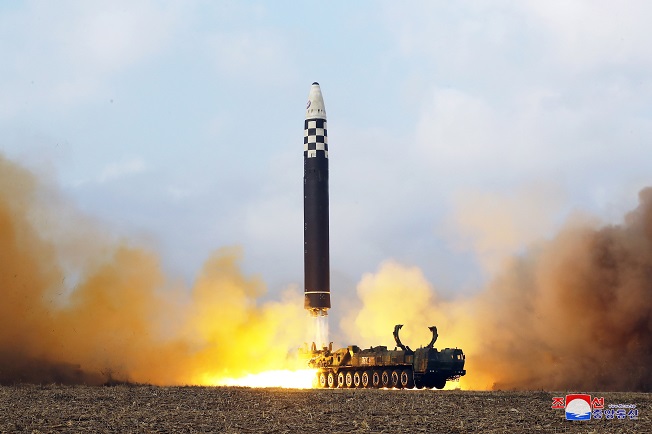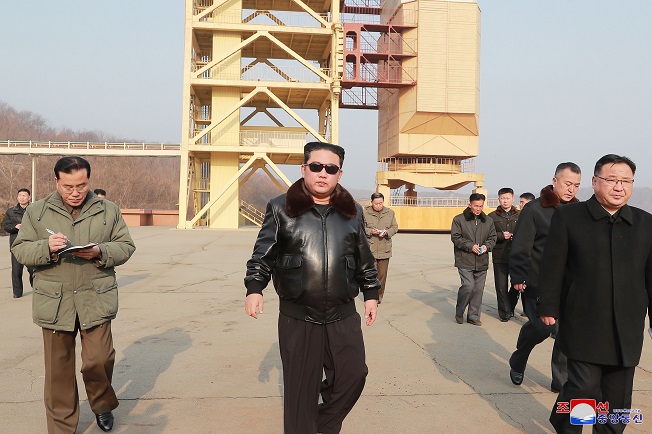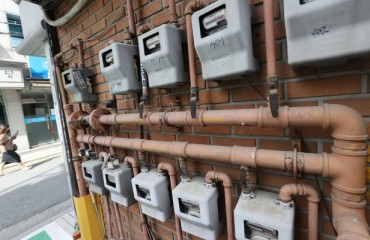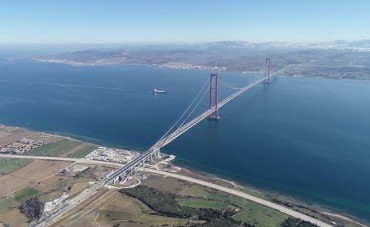
North Korea fires an intercontinental ballistic missile, in this file photo released by its state media on Nov. 19, 2022. (Yonhap)
SEOUL, Nov. 28 (Korea Bizwire) — Five years after North Korea declared the completion of its nuclear force, the Kim Jong-un regime boasts an exalted military status, with advanced short- and long-range missiles, diversified launchers and a push for “tactical” battlefield nuclear arms.
The secretive North’s nuclear and missile programs have apparently made significant progress, as it has gone into overdrive with numerous weapons tests in recent years, including this month’s launch of a new intercontinental ballistic missile (ICBM), called the Hwasong-17, analysts said.
The evolving weapons capabilities have highlighted Pyongyang’s preoccupation with regime security but posed a strategic dilemma as seen in the recent strengthening of defense cooperation between Seoul and Washington, and among the two allies and Tokyo.
“In broad terms, the North’s nuclear capabilities differ greatly from what they used to be five years ago,” Park Won-gon, professor of North Korea studies at Ewha Womans University, said.
“It would be fair to say that in 2017, North’s nuclear force wasn’t quite complete, but the situation is different now.”
On Nov. 29, 2017, the North declared the completion of its nuclear force soon after the launch of a Hwasong-15 ICBM, which it claimed was capable of carrying a “super-large heavy warhead” and “striking the whole mainland of the U.S.”
The declaration, which followed six nuclear tests since 2006, was a culmination of the regime’s decadeslong drive to secure nuclear arms that it has dubbed “treasured swords” in the face of the longstanding South Korea-U.S. security alliance.
To back up that declaration, the North appears to have completed key preparations for what would be its seventh nuclear test, expected to be an effort to make warheads smaller and lighter, analysts said.

This combined photo, released by North Korea’s official Korean Central News Agency on Nov. 7, 2022, shows the North Korean military firing missiles into the East Sea and the Yellow Sea from Nov. 2-5 corresponding to a South Korea-U.S. joint air exercise. (Yonhap)
The nuclear armament claim came months before the 2018 PyeongChang Winter Olympics in the South, which then South Korean President Moon Jae-in used to promote engagement with the North — a reason why observers see the claim as an effort to bolster its bargaining power in nuclear negotiations with the U.S.
With the North’s participation in the winter games, the South’s peace initiative appeared to have gained traction in 2018, which saw three inter-Korean summits and the first-ever summit between the U.S. and the North.
But after a no-deal summit between Washington and Pyongyang in Hanoi in 2019, the mood started to fade.
Seoul’s push for diplomacy was thrust into disarray as the North blew up an inter-Korean liaison office in its border city of Kaesong in anger over South Korean activists’ sending of anti-Pyongyang propaganda leaflets across the border.
In January 2021, the North formally put forward a series of high-stakes defense projects at the eighth congress of its ruling Workers’ Party.
The projects included developing a hypersonic warhead, raising the “hit rates” of missiles with a range of 15,000 kilometers, producing a “super-large” nuclear warhead and developing an ICBM using an “underground or ground solid-fuel engine.”
At the congress, the North also stressed the need to develop tactical nuclear weapons, and secure a nuclear-powered submarine and a nuclear strategic weapon capable of being launched underwater.
The weapons projects appear to have been progressing, as Pyongyang has claimed to have tested an assortment of missiles, including the Hwasong-17 ICBM, hypersonic ones as well as guided weapons for “enhancing the efficiency in the operation of tactical nukes.”
In particular, the North’s shift to tactical nuclear arms — lower-yield weapons used for limited battlefield operations than high-yield “strategic” ones — sounded an alarm, as it poses a complex security challenge to the South and Japan — the core Asian allies of the U.S.
The challenge has been complicated as Pyongyang has been doubling down on the development of short-range ballistic missiles, like the KN-23 modeled after Russia’s Iskander ballistic missile.
The KN-23 is known for “pull-up” maneuvers to avoid interception
Concerns have further grown about the North’s nuclear program since it codified an assertive nuclear policy in September to leave the door open, or lower the bar, for preemptive strikes.
Adding to the worries has been the North’s push to secure diverse missile launch platforms, ranging from a transporter erector launcher (TEL) to a train-borne launcher and even a reservoir-based silo.

North Korean leader Kim Jong-un visits the Sohae Satellite Launching Ground on the country’s west coast, in this photo released on March 11, 2022 by the North’s official Korean Central News Agency. (Yonhap)
But questions linger whether the North’s nuclear drive really serves its security interests.
Its weapons tests have led to a strengthening of security collaboration between the South and the U.S.
In particular, Washington has reaffirmed its “extended deterrence” commitment to using a full range of its military capabilities, including nuclear, to defend its ally.
The U.S. also included a powerful warning to Pyongyang in its recently published Nuclear Posture Review that any nuclear attack against the U.S. or its allies and partners will result in the “end of the Kim regime.”
On top of the closer-knit alliance between Seoul and Washington, security cooperation between the South and Japan — long mired in historical and territorial spats — as well as trilateral cooperation among the three nations has been tightening.
“If you look at the trees, the North appears to be trying to make breakthroughs in their defense efforts, but if you look at the forest, the North has increasingly been at a disadvantage,” Nam Chang-hee, professor of international politics at Inha University, said.
“That might be the North’s strategic miscalculation.”
Given its track record, some observers say, Pyongyang is apparently trying to maximize its bargaining power and get the upper hand in future negotiations with Washington.
Sounding the alarm louder, it seems to be seeking talks on arms control in earnest rather than on its denuclearization — with a demand that it be acknowledged as a nuclear power.
(Yonhap)






